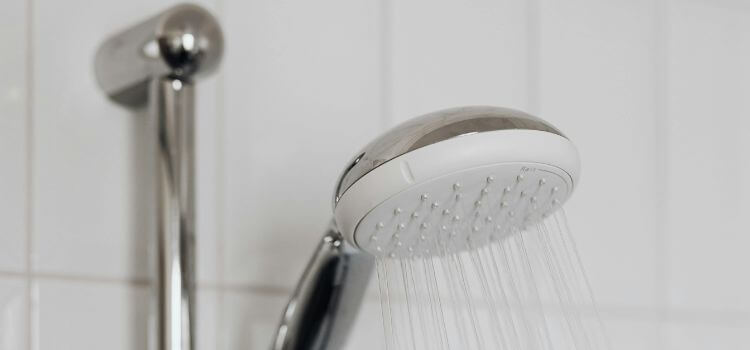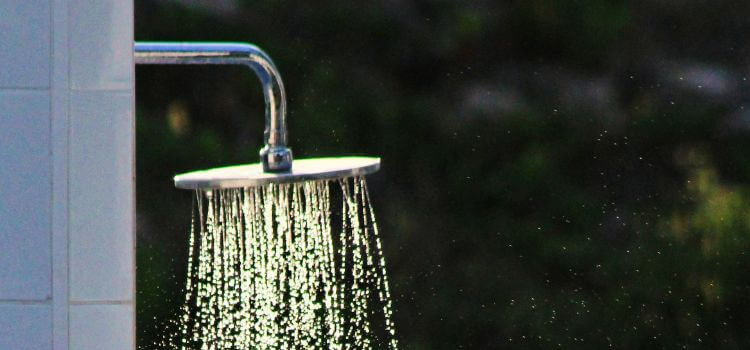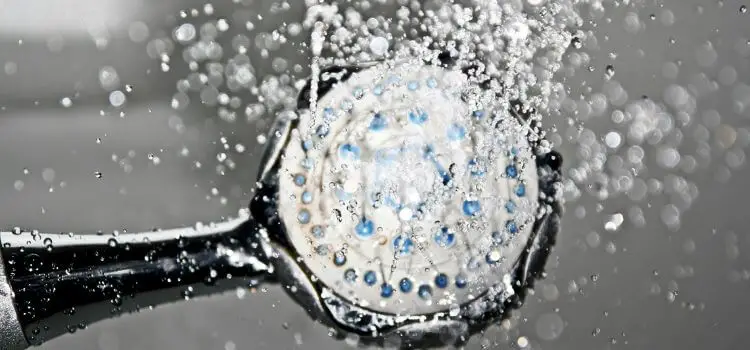A shower diverter that does not fully divert water may need cleaning or replacement. Mineral deposits or a worn seal could be the cause.
Dealing with a faulty shower diverter can be frustrating, especially when it disrupts your daily routine. This common plumbing issue often stems from obstruction or part deterioration, leading to inadequate water flow to the showerhead.
Swift diagnosis and repair can avert further complications, ensuring that your shower diverter functions seamlessly. Whether you’re dealing with a minor fix or a more significant repair, understanding the root cause is the initial step towards a resolution. Continue reading to gain insights into troubleshooting and fixing a shower diverter that isn’t diverting correctly.
What is the Shower Diverter?
Shower diverters are designed to switch the flow of water from the faucet to the showerhead. Over time, mineral deposits, rust, or simply regular wear and tear can cause the diverter to malfunction.
Homeowners and maintenance personnel alike need to address this issue promptly to restore full functionality. Ensuring a functioning diverter provides convenience and prevents water waste. Timely repairs or replacements can save on water bills and protect your plumbing system from further damage. By maintaining a healthy shower diverter, you keep an efficient and enjoyable bathroom setup.

Types Of Shower Diverters
When preparing for a relaxing shower, nothing disrupts the mood like a malfunctioning diverter. Shower diverters are key components in directing water from your bathtub faucet to the showerhead. Knowing the type of diverter in your bathroom is crucial for troubleshooting effectively. Let’s explore the various kinds and how they differ.
How They Work
Shower diverters come in different styles, but they all serve the same purpose. When you pull the lever or twist the knob, the diverter’s valve redirects water flow from the tub spout to the showerhead. This simple mechanism lets you shift from filling the tub to enjoying a shower without any hassle.
- 3-Valve Diverters: Found in setups with separate taps for hot and cold water, they contain a third valve that changes the water’s path.
- 2-Valve Diverters: These can be located between the taps or integrated into a single faucet and control water flow with a twist or turn.
- Tee Diverters: This single-valve diverter is situated on the tub spout itself and activated by pulling up a knob on the spout.
Common Problems
Shower diverters may start failing over time due to normal wear and tear or mineral build-up. The diverter valve can become stuck, obstructed, or lose its seal, leading to water leaking from the tub spout during a shower. In some cases, the handle or knob might become hard to operate, indicating it’s time to clean, repair, or replace the diverter.
Regular maintenance and prompt attention to these issues can restore full functionality to your shower system. Keep an eye on the diverter’s operation to ensure a seamless transition between tub and shower modes. Remember, a well-functioning diverter is the key to a perfect shower experience.
Signs Of A Diverter Problem
The shower diverter is a small but critical component in your bathroom. It directs water flow from the bathtub faucet to the showerhead. Like any part of your plumbing system, it can develop problems over time. Knowing the signs of a diverter problem helps you address issues promptly. This can save water and spare you from higher utility costs.
Water Not Fully Diverted
One key sign of a diverter issue is water flow. When you lift or turn the diverter, you expect all water to flow out through the showerhead. If water still comes out from the faucet, the diverter needs to be fixed. Here’s what to look for:
- Incomplete switch: Shower provides a weak flow while the faucet still runs strongly.
- Water pathway: Water should travel to the shower exclusively but splits the path.
Leaking Or Dripping
A leaking diverter valve is another common problem. Leaks can cause damage and wastewater. Observe these points:
- Faucet drips: Water drips from the faucet even when the diverter is engaged.
- Showerhead leaks: Showerhead should be dry when not in use. A leak could be a sign.
Reasons For A Diverter Not Working
Do you need help with your shower diverter? This common plumbing issue can interrupt a comfortable shower. Understanding the reasons behind a diverter malfunction is key to a quick fix. Let’s explore the common problems.
Age And Wear
Like most mechanical parts, shower diverters suffer from age and regular wear. Constant use leads to the diverter erosion or breaking. Rubber washers or seals degrade over time. This leads to leaky valves and inefficient water diversion. Look for these signs:
- Harder to turn the diverter
- Water leaks from the showerhead when filling the tub
- Visible rust or corrosion on the diverter valve
Hard Water Buildup
Hard water signifies high mineral content in your water supply. It’s notorious for causing buildups inside your plumbing. This includes your shower diverter. Over time, this mineral buildup can block the water flow or jam the diverter. Here’s what you may notice:
- White, chalky residue on the shower hardware
- Decrease in water pressure
- Difficulty in moving the diverter handle
Regular cleaning is a proactive step you can take to reduce hard water buildup. By staying on top of this maintenance task, you can prevent serious cases that may require professional intervention. This empowers you to maintain the performance of your shower diverter and ensure a satisfying shower experience.
Tools For Fixing Your Diverter
A faulty shower diverter can be a nuisance. The right tools will make the repair simpler and quicker. For a DIY fix to a diverter that won’t fully engage, you’ll need a few basic tools. Gather these tools before you start the job.
Adjustable Wrench
An adjustable wrench is a must-have. It grips the diverter valve with ease. Ensure you have one that adjusts to different sizes. This versatility helps to avoid damage to the fixture.
Screwdriver
You’ll find screws in the mix. A screwdriver, preferably multi-head, is ideal. It is useful for removing and tightening diverter components. Match the screwdriver head to the screw type.
Pliers
Pliers provide additional grip and help remove the diverter if it’s stuck. Needle-nose pliers can reach into tight spaces. Ensure they have a good handle to prevent slipping.
Prepare the work area before diving in. Lay out the tools for easy access. With these in hand, you’ll be ready to fix the diverter.

How to Fix a Shower Diverter Problem?
Shower diverter issues can interrupt your daily routine. When water doesn’t fully divert, your shower experience is far from ideal. However, with some basic DIY skills, you can tackle the problem yourself. This guide breaks down fixing a pesky diverter into simple steps.
Step-by-step Guide To Fixing A Shower Diverter
- Turn off the water supply to prevent any leaks during repair.
- Identify the type of diverter. Usually, diverters are pull-up knobs on the spout or a separate lever.
- Inspect the diverter knob or lever for visible signs of wear or damage.
- Use a screwdriver or wrench for any screws or nuts needing removal.
- Carefully remove the diverter. Keep all parts together and note their order.
- Clean any debris or buildup that could be causing the blockage.
- Test the diverter mechanism. Ensure it moves freely without resistance.
- Replace any faulty parts with new components if cleaning didn’t fix the issue.
- Reassemble the diverter. Ensure every part is back in its correct place.
- Turn the water supply back on and test the functionality of the repair.
How To Remove And Replace A Faulty Diverter
Identifying a defective diverter is the first step in removing and replacing it.
- Check for signs like leaking, inability to change water flow, or stiffness in operation.
- Source a replacement that matches your shower model.
| Step | Action | Tools Needed |
|---|---|---|
| 1 | Shut off water | – |
| 2 | Remove the old diverter | Screwdriver, Wrench |
| 3 | Clean the area | Cloth, Cleaning agent |
| 4 | Install the new diverter | Screwdriver, Wrench |
| 5 | Restore water and test | – |
Fitting your new diverter calls for a careful approach to ensure a tight seal and proper function. Follow the manufacturer’s instructions for the best results. Test after installation to enjoy a fully functional shower once more!
Preventing Future Diverter Problems
When To Call A Professional
Keeping your shower diverter working right means no more surprise cold showers. Let’s discuss tips that will help prevent diverter issues before they start. Regular check-ups and smart water choices make a big difference.
Regular Maintenance
Consistent maintenance is key to a long-lasting shower diverter. Follow these easy steps to prevent breakdowns:
- Inspect regularly: Look out for signs of mineral build-up or wear every few months.
- Clean carefully: Use a gentle cleaner. Scrub around the diverter valve to remove deposits.
- Check for leaks: Tiny drips can lead to bigger issues. Be sure to fix leaks quickly.
- Replace washers: Over time, washers wear out. A fresh washer can mean a good seal.
Using Water Softeners
Hard water makes minerals build up, leading to blockage. A water softener can protect your plumbing. Here’s why it’s a good idea:
- Benefits of Water Softeners
- Less mineral accumulation in pipes
- Easier on skin and hair during showers
- Soaps and shampoos work better
- Plumbing fixtures last longer
With these simple habits, your shower diverter will serve you well. Smooth showers, here we come!
Shower diverters play a crucial role in your bathroom, directing water from the tub faucet to the showerhead. Sometimes, a diverter may fail to perform, leading to a weak shower stream or water still flowing from the tap. This is when you might ask: “Should I call a professional?” Knowing when to seek expert help can save you time, frustration, and potential water damage.
Dangerous Or Complicated Repairs
Shower diverter issues might seem simple at first, but they can be risky. If your diverter is part of a complex system or if the problem includes electrical components, it’s vital to contact a professional plumber. The risks include electric shock, damaging your home’s plumbing, or creating a water leak that could lead to mould or structural damage. Only attempt these repairs if you’re fully equipped and trained.
If You Do Not Feel Confident Doing The Repair Yourself
Even if the repair might not seem dangerous, it’s essential to assess your comfort and skill level. Do you have the right tools? Do you understand the plumbing involved? If you need more confidence or clarification, calling a professional is the best course of action. A professional plumber has the expertise to diagnose the issue quickly and perform repairs with precision to ensure long-lasting function. It’s better to invest in professional help than to risk a botched job.
- Recognize the signs of shower diverter malfunctioning, such as water not being directed properly.
- Do a quick inspection to see if it’s a simple problem like a loose screw.
- If you’re hesitant about the repair, contact a professional, as they have the necessary experience and tools.
Frequently Asked Questions For Shower Diverter Not Fully Diverting
Why Is My Shower Diverter Not Fully Diverting Shower Spout?
Your shower diverter might not fully divert the water due to mineral buildup, a faulty washer, or a broken valve. Regular cleaning and replacing worn parts can resolve this issue.
Why Is My Diverter Still Letting Out Water When I Turn The Shower On?
Your diverter valve might be worn out or stuck, causing water to leak even when you switch on the shower. Consider replacing or repairing it to fix the issue.
How Do You Fix A Stiff Shower Diverter?
To fix a stiff shower diverter:
- Turn off the water supply and dismantle the faucet handle.
- Clean any mineral buildup with vinegar.
- Lubricate the diverter’s moving parts with the plumber’s grease.
- Reassemble the components and turn the water back on to test functionality.
How Do I Know If My Shower Diverter Is Bad?
A faulty shower diverter often causes water to leak from the tub spout when the shower is engaged or experiences low pressure. If you notice these signs, your diverter may need repair or replacement.
Conclusion
Dealing with a stubborn shower diverter can be frustrating. Ensuring it operates smoothly protects your shower’s functionality. Regular maintenance and timely repairs prevent future issues. Trust professional plumbers for complex problems. Stay on top of diverter glitches before they escalate to keep your showers stress-free.

